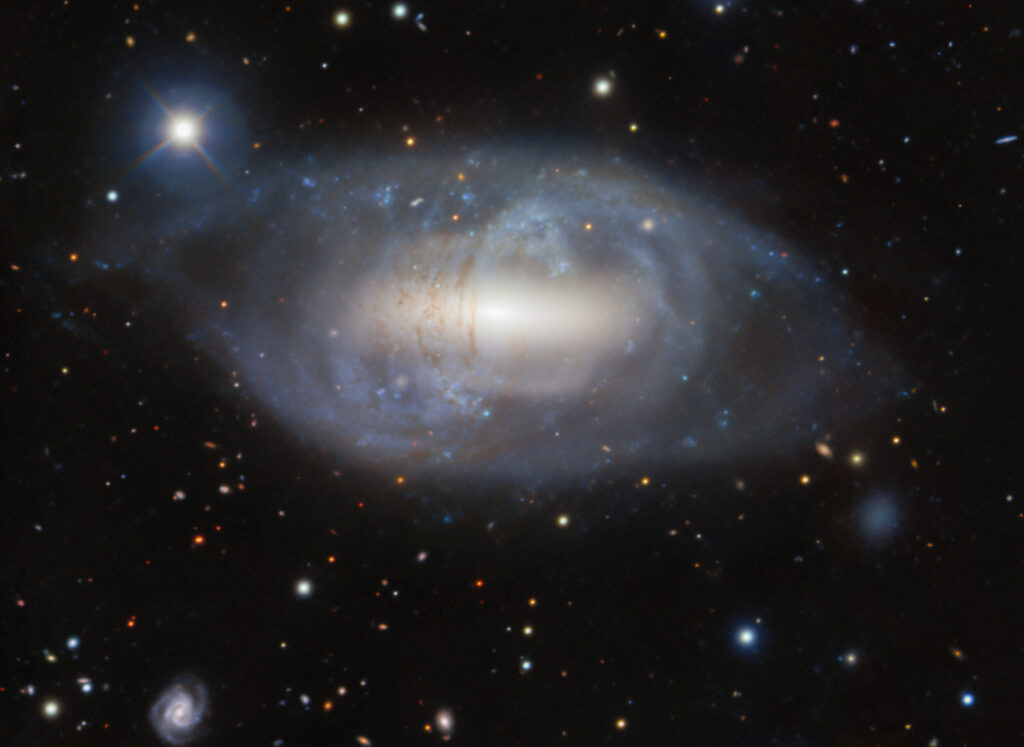The presented image was obtained using the Gemini North telescope. It shows the unusual galaxy NGC 2685, also known as the Spiral Galaxy.

NGC 2685 is located at a distance of 42 million light-years from Earth in the direction of the constellation Ursa Major. It is smaller than the Milky Way, with a diameter of 50,000 light-years. But despite its nickname, NGC 2685 is not a spiral galaxy. In fact, NGC 2685 is classified as a lenticular galaxy with a polar ring.
Lenticular galaxies represent a transitional stage between spiral and elliptical galaxies. Like our Milky Way, they have the shape of a disk, a rather pronounced core and halo. At the same time, the spiral structure is no longer visible in them and new stars practically do not form. NGC 2685 also has a polar ring, a structure of gas and stars that rotates above the poles of the galaxy perpendicular to its plane. It is believed that such a ring is formed as a result of the interaction of galaxies, mergers or tidal accretion.
Since NGC 2685 is one of the closest polar ring galaxies to us, it is an object for study. Astronomers suggested that its structure formed when it captured material from another galaxy, which was then pulled into a ring.
Earlier we talked about how the space snake hid the galaxy from the Hubble telescope.
According to https://noirlab.edu
Follow us on Twitter to get the most interesting space news in time
https://twitter.com/ust_magazine


